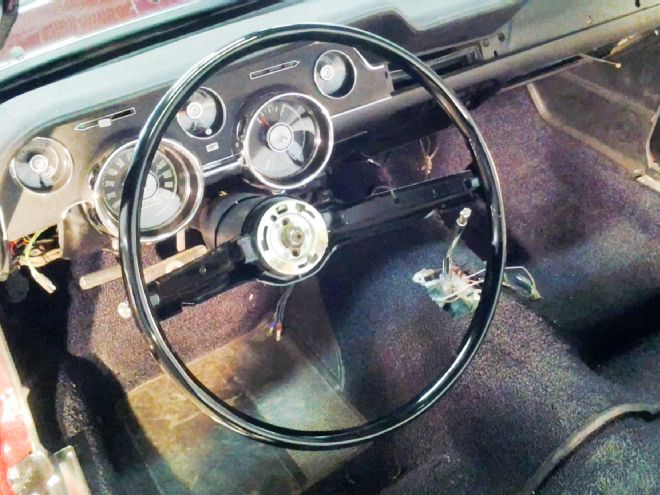
Whenever you’re dealing with an original early Mustang that has been driven its whole life, especially if it has been parked outside all those years, chances are the steering wheel’s hard plastic rim has several cracks around its perimeter. Mustang Monthly’s Project 1968 had just such a wheel, with more than one wide crack in the plastic. We initially called Scott Drake to order a new one, but when they were back-ordered on the correct wheel, restorer Jason White popped up and said, “I can fill in the cracks and make the wheel look like new.” White showed us in step-by-step detail how he fixes old wheels, and it only took a few hours, including drying time for the paint. We used our stock 1968 wheel, but this same fix applies for all early Mustang plastic steering wheels.
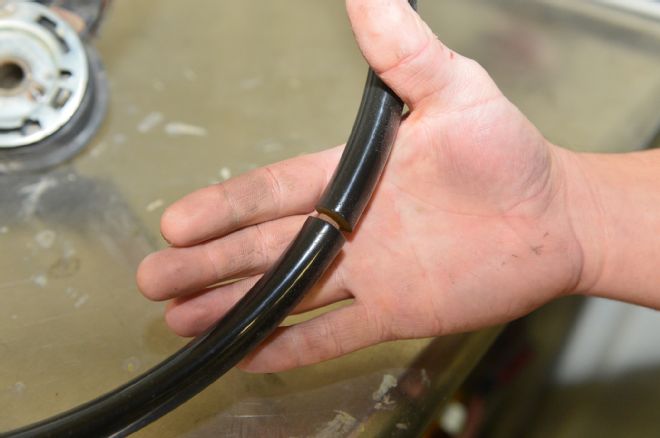
01. Cracks in our 1968 steering wheel were 1/4- to 3/8-inch wide. The hard plastic is reinforced with a steel insert.
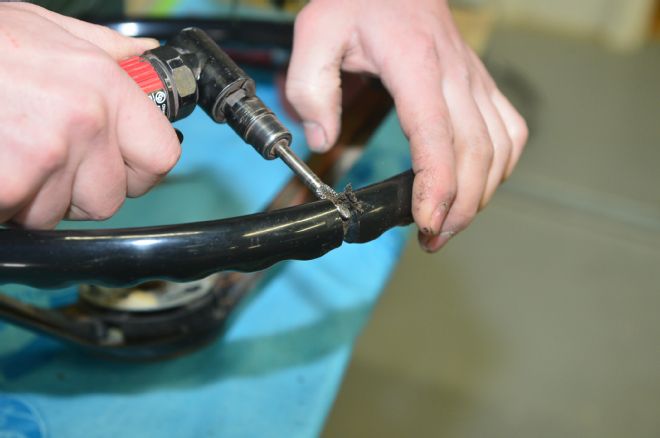
02. Using a die grinder with a carbide tip, wallow out the cracks to make a V shape. Grind down to the metal insert. The glue must contact the metal and plastic or the steering wheel will easily crack again.
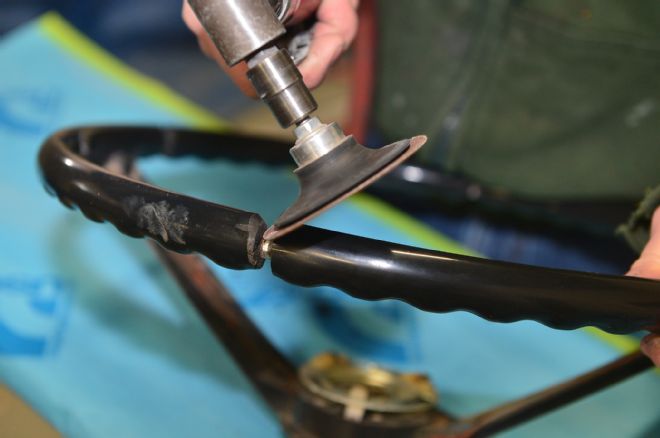
03. Using 120-grit sandpaper, sand the inside edges of each crack to define a V-shape. Notice how this sanded V-crack now has an angled surface extending to the steel insert. Finish by hand-sanding to remove debris inside the enlarged V-shaped area. The glue requires a smooth surface for good adhesion. Make sure to hand sand any other imperfections in the wheel, including the spokes.
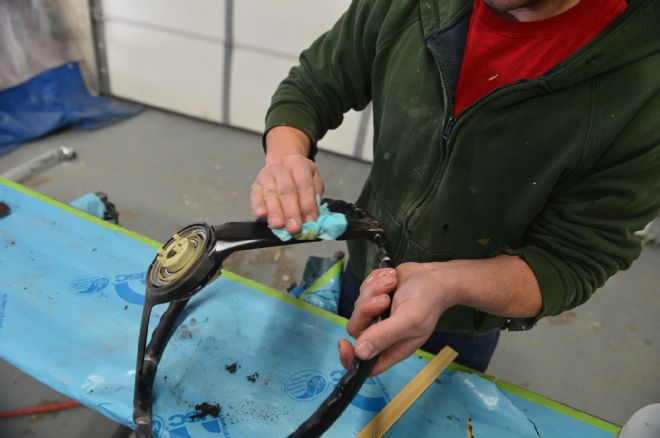
04. Clean the entire wheel with an ammonia-based liquid.
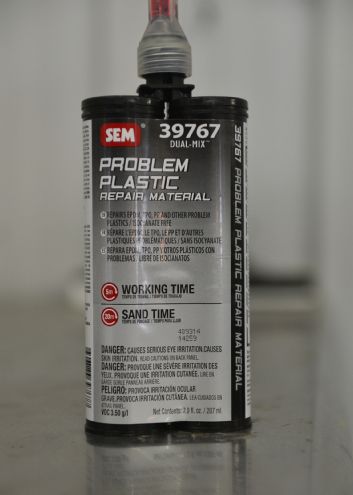
05. White used SEM 39767 Dual Mix Problem Plastic Repair Material, which is a glue to fill in the cracks.
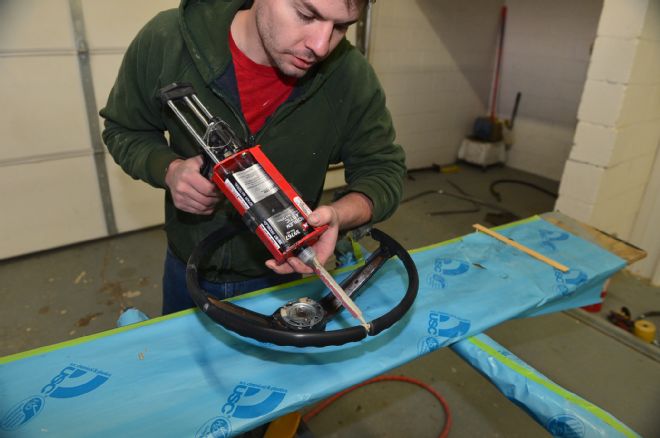
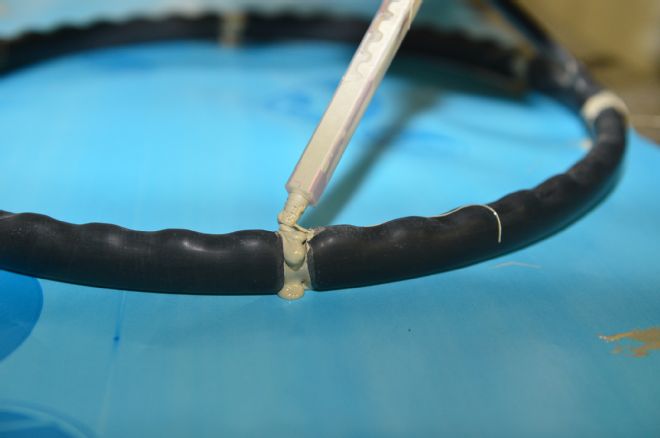
06-07. This glue requires a gun to mix the two components in side-by-side tubes as you squeeze the trigger. Fill the cracks with glue.
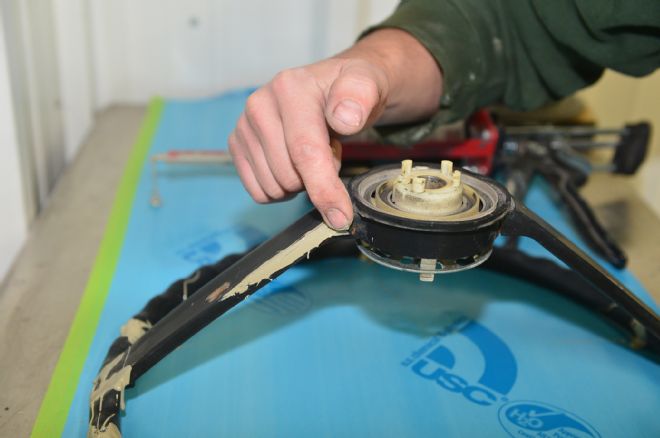
08. Spread the glue over the sanded surfaces, similar as to how you would with body filler.
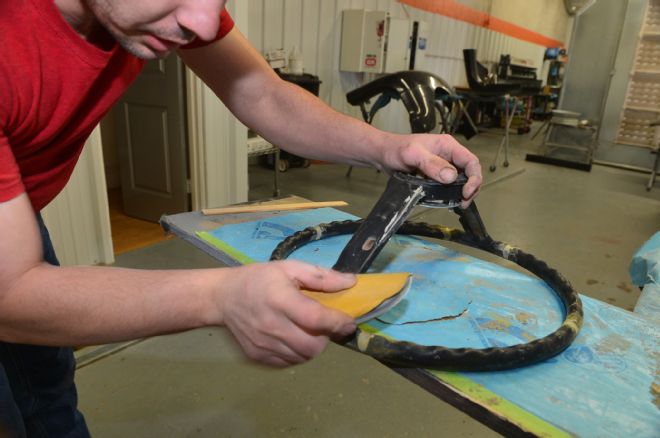
09. When the glue dries, grind off rough edges with 80-grit paper on a grinder, then hand sand with more 80-grit.
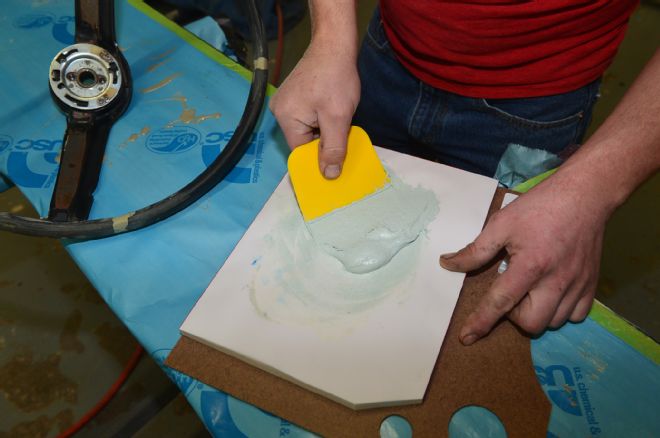
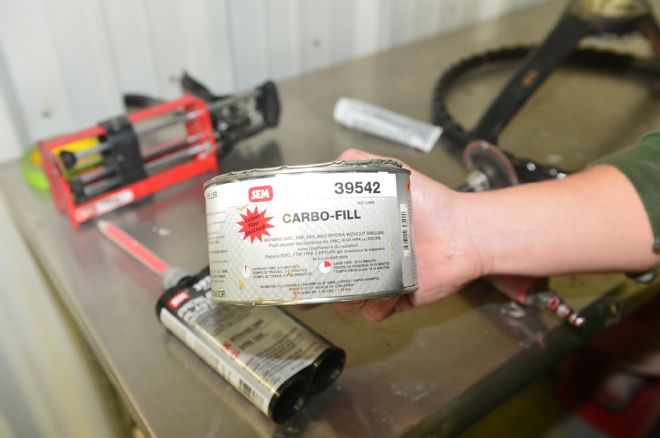
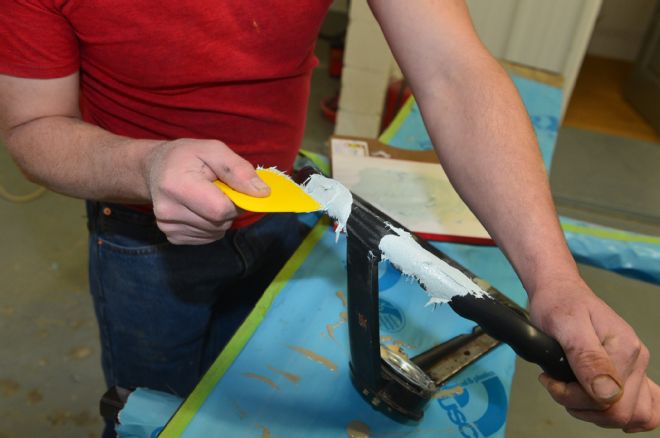
10-12. Over the glue, you’ll need to use some SEM Carbo-Fill 39542 compound, which comes in a can. Mix it with a plastic putty knife, and then fill the cracks with the Carbo-Fill.
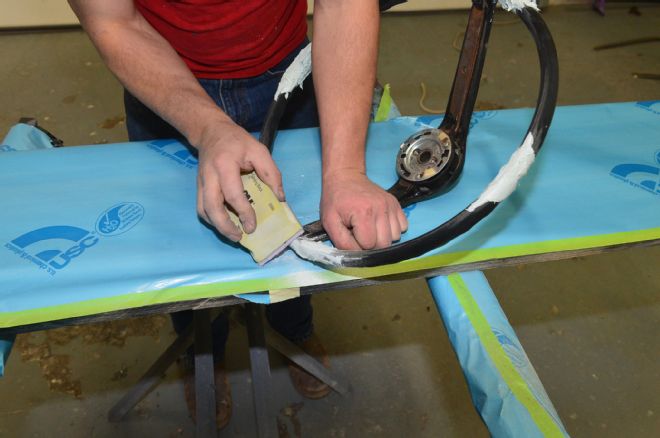
13. Block sand the dried compound.
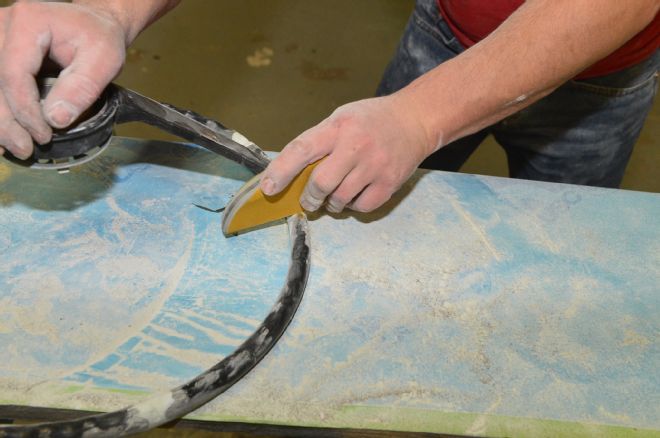
14. Form the finger grips with an edge of sandpaper wrapped over a thin block of wood.
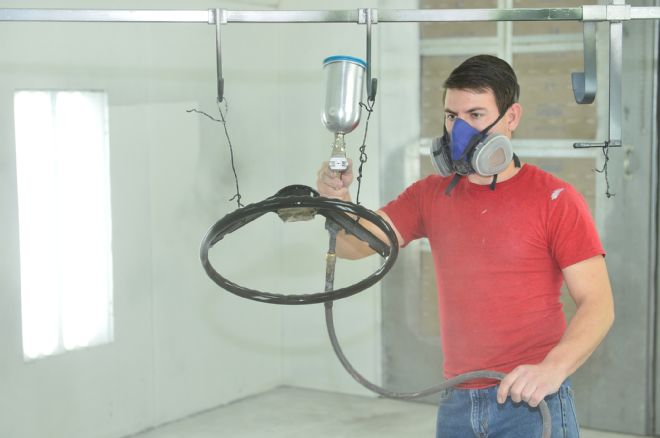
15. Spray the wheel first with primer, then with semigloss black paint (or whatever color your wheel should be to match your interior). Jason used a spray gun, but a spray can will work too.
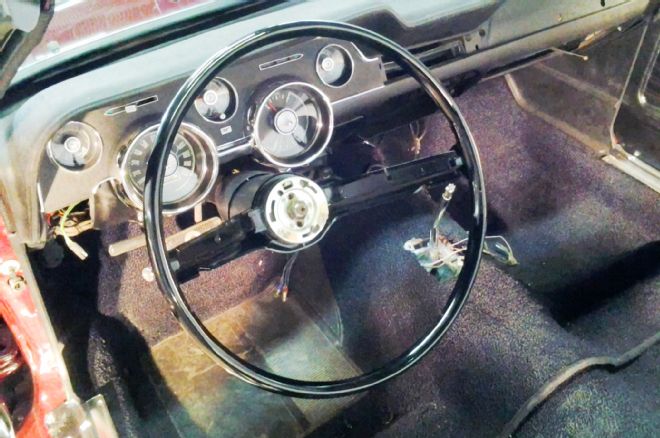
16. With the cracks filled and the plastic painted, this steering wheel looks brand new and ready for the installation of the trim.